Welcome to your ultimate guide for gardening, where you’ll discover expert tips and tricks to help you cultivate your green thumb and achieve stunning success in your garden. Whether you’re a beginner or an experienced gardener, we’ve got you covered with everything you need to know to plan, plant, and maintain your garden.
Key Takeaways:
- Envision your dream garden and consider your space, climate, and preferences.
- Understand your plant hardiness zone to select the right plants.
- Invest in high-quality soil and test its pH level.
- Group plants based on their sunlight requirements.
- Water plants consistently but strike a balance to avoid overwatering or underwatering.
- Mulch to retain moisture, suppress weeds, and regulate soil temperature.
- Fertilize regularly with organic or slow-release fertilizers and prune to promote healthy growth.
- Remove weeds and pests and embrace companion planting.
- Celebrate your successes, embrace sustainable practices, and involve others in your gardening journey.
Planning Your Paradise: Envisioning Your Dream Garden
Before you put on your gardening gloves and begin digging in the soil, take some time to plan your paradise. Visualize your dream garden, considering the available space, the local climate, and most importantly, your own preferences. This will help you create a garden that reflects your personality, style, and needs.
One of the essential steps to starting a garden is understanding your plant hardiness zone. This is crucial for selecting plants that will thrive in your area. You can easily determine your zone by using the USDA Plant Hardiness Zone map or visiting your local garden center.
Investing in high-quality soil and compost is also vital for a thriving garden. Healthy soil supports the growth of strong and resilient plants, so make sure to enrich your soil with organic matter and test its pH levels. Whether you’re planning a vegetable garden or a flower garden, preparing your soil for the specific needs of your plants is essential.
Knowing the sunlight requirements of your plants and grouping them based on their needs is another key element to success. If you have limited outdoor space, don’t worry. Indoor gardening is a great option, and there are plenty of plants that do well in pots.
Watering your plants wisely is crucial for their growth and health. Consistent watering is essential, but overwatering can be just as harmful as underwatering. Deep, infrequent watering is the ideal practice, allowing the water to reach the plant’s roots and promoting strong growth.
Mulching, fertilizing, pruning, and addressing weeds and pests are necessary for maintaining a healthy garden. Embracing sustainable practices, learning from nature, and getting involved in gardening communities can enhance the overall experience. By thinking outside the box and adapting to the changing seasons, your garden will remain dynamic and captivating throughout the year.
Finally, create spaces in your garden for relaxation and reflection, involve children in gardening, and celebrate the milestones of your green journey. With these expert tips, you’re ready to transform your space into a paradise that will inspire a lifelong love for gardening.
When starting your garden, having the right tools is essential. Some basic tools to have on hand include a trowel, pruner, watering can, and gloves. Consider the size of your garden and your specific needs when selecting tools. Investing in quality tools will not only make your work easier, but they will last longer and save money in the long run.
Knowing Your Zone: Understanding Plant Hardiness
To ensure that your plants thrive, it’s crucial to know your zone. Understanding plant hardiness zones allows you to select the right plants that can withstand the specific climatic conditions in your area. The United States is divided into 13 zones, each with a temperature range that determines which plants will thrive in your region.
The USDA Plant Hardiness Zone map is an excellent resource for determining which zone you belong to. Simply enter your zip code, and the map will display your zone. Alternatively, you can consult your local garden center to find out your zone. By knowing your zone, you can make informed decisions about what to plant in your garden and ensure optimal growing conditions.
If you’re a beginner, organic gardening is an excellent option. Organic gardening emphasizes soil health, biodiversity, and sustainability. By avoiding synthetic pesticides and fertilizers, you can create a healthy ecosystem that supports plant growth and thrives in your local environment. Organic gardening is also an excellent way to reduce your carbon footprint and promote sustainable practices in your community.
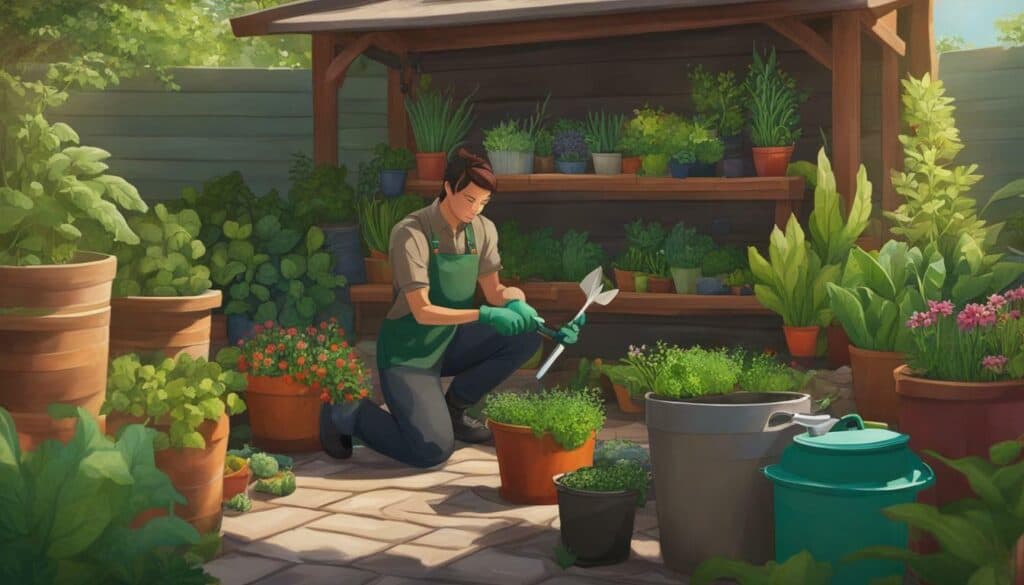
Organic gardening is an excellent option for beginners, but it’s important to choose plants that are suitable for your hardiness zone. By selecting the right plants, you can ensure that they will thrive in your garden and produce healthy crops or beautiful flowers.
Soil, the Secret Ingredient: Enriching Your Soil
Want your plants to thrive? Well, soil is the secret ingredient to a successful garden. Investing in the quality of your soil and enriching it with organic matter is essential for healthy plant growth, whether you’re growing vibrant vegetables or stunning flowers.
To start, invest in high-quality compost or organic matter to provide essential nutrients for your soil. This will improve soil structure and drainage, as well as encourage beneficial microorganisms that assist in breaking down organic matter.
Testing the pH level of your soil and adjusting it if necessary is also important. Certain plants thrive in specific pH ranges, so it’s vital to know your soil’s pH level before planting. For example, vegetables like tomatoes and peppers prefer slightly acidic soil, while some flowers like hydrangeas thrive in alkaline soil.
Understanding the sunlight requirements of your plants and grouping them accordingly will maximize their growth potential. For instance, sun-loving plants like tomatoes and peppers should be placed in areas with plenty of direct sunlight, while shade-loving plants like lettuce and spinach should be planted in shadier areas.
Consistent watering, but not overwatering, is vital for plant health. An easy way to check if your plants need watering is by sticking your finger about an inch into the soil. If it feels dry, it’s time to water. Using a watering can or a soaker hose, water deeply and infrequently to encourage deep root growth.
Using mulch in your garden helps retain moisture, suppresses weeds, and regulates soil temperature. Organic mulch like shredded leaves or grass clippings also breaks down over time, adding nutrients back into the soil. Just make sure to avoid piling mulch up against plant stems, as this can lead to rot.
Regularly fertilizing your garden with organic or slow-release fertilizers provides the necessary nutrients for growth. Be sure to follow the package instructions and avoid over-fertilizing, which can harm your plants. Different plants have unique fertilizing needs, so tailor your fertilization to your specific garden type, whether it’s vegetable gardening or flower gardening.
Pruning and shaping your plants promote their health and proper growth, while addressing weeds and pests prevents damage. Keep an eye out for pests like aphids and spider mites, which can quickly damage your plants. Utilizing natural pest control methods like neem oil or diatomaceous earth is an eco-friendly way to rid your garden of unwanted pests.
Embracing sustainable practices, such as collecting rainwater and using organic fertilizers and natural pest control methods, contributes to an eco-friendly garden. Not only is this good for the environment, but it also benefits your plants. Avoiding harsh chemicals and using natural methods often leads to healthier, more robust plants.
Finally, involving children in gardening and celebrating each milestone in your garden’s progress adds to the joy of gardening. Children can learn valuable lessons about the environment and gain a sense of responsibility as they care for their plants. Celebrating each step in your garden’s growth, from planting to harvest, is essential in appreciating the hard work and effort put into your garden.
By following these tips, you can enrich your soil and create a thriving garden. Happy gardening!

Sunlight Savvy: Maximizing Plant Growth
Sunlight is like nourishment for plants, and being savvy about it can significantly boost their growth. Understanding the sunlight requirements of your plants and providing them with the right amount can make all the difference, whether you have a spacious outdoor garden or are venturing into indoor gardening.
To maximize plant growth, it is important to first understand the sunlight requirements of different plants. Most plants, shrubs, and trees need at least 6 hours of sun, unless otherwise noted. Observing your garden throughout the day can help identify areas with full sun, partial shade, or full shade. Grouping plants accordingly can maximize their growth potential.
Watering plants wisely is another crucial aspect of plant growth. Watering deeply but infrequently allows the soil to dry out slightly between waterings, which is ideal for most plants. Consistent watering is important, but finding the right balance is key to avoid overwatering or underwatering.
In addition to sunlight and water, soil quality is also crucial for plant growth. Investing in high-quality compost or organic matter can enrich the soil’s nutrients. Testing the pH level of the soil and adjusting it if needed can ensure optimal growing conditions for plants.
Proper pruning is vital to the stimulation, survival, and shaping of plants. Removing dead or diseased branches, shaping shrubs, and training climbing plants to support structures can improve air circulation and reduce the risk of diseases.
Mulching is another technique that can maximize plant growth. Applying a layer of organic mulch around plants can retain moisture, suppress weeds, and regulate soil temperature. This can enhance the overall aesthetics of the garden as well.
Providing plants with the necessary nutrients is important for their growth. Fertilizing the garden regularly with organic or slow-release fertilizers can provide essential elements. However, it is important to follow package instructions and avoid over-fertilizing, as it can harm plants.
To minimize competition for nutrients and water, it is important to regularly remove weeds from the garden. Staying vigilant and using mulching or pre-emergent herbicides can keep weeds at bay.
Insects and pests can also hinder plant growth. Identifying common pests in the area and taking preventive measures can help minimize damage. Introducing beneficial insects or using organic pest control methods can also help. Regularly inspecting plants for signs of infestation and addressing any issues promptly is important.
Overall, maximizing plant growth requires planning, understanding sunlight requirements, providing proper watering and nutrition, maintaining soil quality, pruning, and addressing pests and weeds. By following these tips and techniques, gardeners can create a thriving and beautiful garden that leaves others in awe.
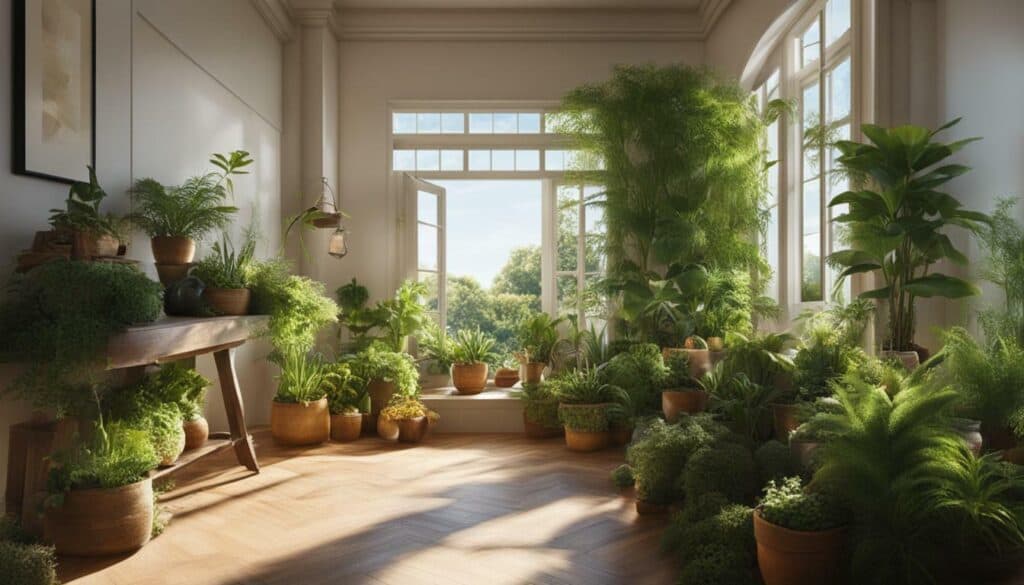
Water Wisely: Nurturing Plants with Proper Watering
Water, the lifeblood of your garden, is vital for nurturing your plants and promoting healthy growth. However, knowing how to water your garden wisely is key to preventing common pitfalls like root rot or stunted growth.
Consistent watering is important, but it’s crucial to understand your plants’ specific water needs to avoid over or underwatering. Different plants require varying amounts of water, so it’s essential to research their specific needs.
In addition to watering, maintaining good soil is crucial for a thriving garden. Investing in high-quality compost or organic matter will enrich the soil’s nutrients. Companion planting is also beneficial, as some plants naturally complement each other, repelling pests or enhancing nutrient absorption.
Mulching is another valuable practice. It retains moisture, suppresses weeds, and regulates soil temperature. Adding a layer of organic mulch around your plants enhances the overall aesthetics of your garden while providing these benefits.
Regular pruning ensures proper growth and promotes healthy plants. Removing dead or diseased branches, shaping shrubs, and training climbing plants are all essential pruning practices. Pruning improves air circulation, reducing the risk of diseases.
Proper fertilization is necessary for plants to thrive. Fertilizing your garden regularly with organic or slow-release fertilizers will provide essential growth elements. However, it’s crucial to follow package instructions and avoid over-fertilization, as it can harm plants.
Garden pests can cause significant damage to your plants, so it’s important to take preventive measures. Identifying common pests in your area and introducing beneficial insects or using organic pest control methods can minimize damage. Regularly inspecting plants for signs of infestation and addressing any issues promptly is crucial.
Watering wisely and implementing these nurturing practices will elevate your gardening game to new heights. Whether you’re a seasoned green thumb or just starting out, these tips and tricks will help you grow magnificent plants in your garden.
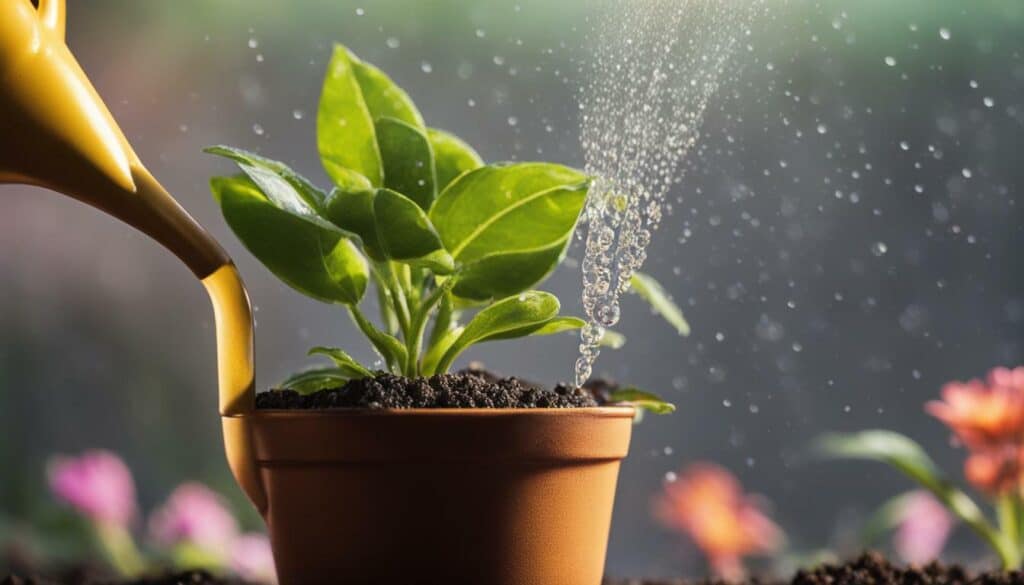
Embrace Mulch Magic: Retaining Moisture and Suppressing Weeds
Mulch, the unsung hero of gardening, offers a myriad of benefits for both your plants and the overall health of your garden. By embracing mulch magic, you can keep soil moisture levels in check, suppress pesky weeds, and create a protective layer that stabilizes soil temperature.
Organic mulch, made from natural materials such as leaves, straw, or wood chips, is an excellent option for retaining soil moisture. By creating a barrier between the soil and the air, mulch reduces water evaporation. This means that your plants will require less watering, reducing water expenses and conserving water resources.
In addition to conserving water, mulching also suppresses weed growth, which can compete with your plants for nutrients and water. By applying a layer of organic mulch around the base of your plants, you create a physical barrier that prevents weed seeds from germinating and growing. This saves time and energy, as you don’t need to constantly pull weeds to keep your garden in tip-top shape.
Organic mulch also decomposes over time, which enriches the soil with essential nutrients, improving the overall health of your plants. By breaking down gradually, mulch provides slow-release nourishment to your garden, which can reduce the need for additional fertilizers.
When selecting mulch, look for options that are suitable for your specific gardening needs. For instance, finely shredded leaves are an excellent choice for vegetable gardens. For flower beds, bark chips or pine straw can add a decorative touch while retaining moisture effectively.

Embracing mulch magic can help rejuvenate your garden and keep it looking its best without the need for excessive watering or weeding. By selecting high-quality organic mulch and applying it routinely, you can enjoy the benefits of a healthy and thriving garden while reducing environmental impact and conserving resources.
Feeding Frenzy: Providing Essential Nutrients
Just like us, plants need their nutritional sustenance to thrive. Feeding your garden with the right balance of essential nutrients is crucial, whether you’re tending to a bountiful vegetable patch or cultivating a stunning flower garden. For vegetable gardening, planting crops that are high in nutrients, such as tomatoes, cucumbers, and beans, is recommended. For flower gardening, choosing flowering plants that thrive in your climate and soil type can help ensure success.
To provide essential nutrients, a good soil foundation enriched with compost or organic matter is necessary. In raised bed gardening, creating a nutrient-rich soil blend is simplified with the use of fertile soil and compost. Worm castings and fish emulsion can also be added for extra enrichment.
| Plant Nutrient | Function | Deficiency Symptoms |
|---|---|---|
| Nitrogen (N) | Required for vigorous vegetative growth and chlorophyll production | Yellowing of leaves, stunted growth, low fruit yield |
| Phosphorus (P) | Required for root growth, flower development, and fruit production | Poor root growth, weak stems, low seed and fruit production |
| Potassium (K) | Required for stem and root growth, stress tolerance, and fruit development | Leaf edges yellowing, scorched leaves, weak stems, small fruit |
Understanding the sunlight requirements of different plants and watering them appropriately is also important. Vegetables and flowers have varying sunlight requirements, so it’s crucial to group them accordingly. Watering plants consistently, with a careful balance between under and over-watering, ensures optimal plant health. Deep, infrequent watering is the ideal practice for most plants.
Mulching is another way to provide essential nutrients to the soil. Organic mulch helps retain moisture, suppress weeds, and regulate soil temperature. Choosing the right mulch for different gardening needs, such as straw, leaves, or bark chips, can also contribute to overall soil health.
Regularly fertilizing with organic or slow-release fertilizers ensures plants receive the necessary nutrients. For vegetable gardening, using a balanced fertilizer or one with higher nitrogen content can boost growth. For flower gardening, fertilizers with higher phosphorus content can encourage more blooms.
Pruning, weed control, and pest management are also important aspects of maintaining a thriving garden. Regularly removing weeds prevents competition for nutrients, and monitoring for signs of infestation and taking preventive measures help protect the plants. Embracing companion planting and sustainable practices, such as using rainwater for irrigation and avoiding harmful pesticides, contributes to a healthy and eco-friendly garden.
Overall, starting a garden and providing essential nutrients to plants is an enjoyable and rewarding experience with the right practices. By following these expert tips, individuals can create a thriving garden that provides an abundant supply of fresh and nutritious fruits and vegetables, or a stunning flower garden that awes and inspires. Happy gardening!
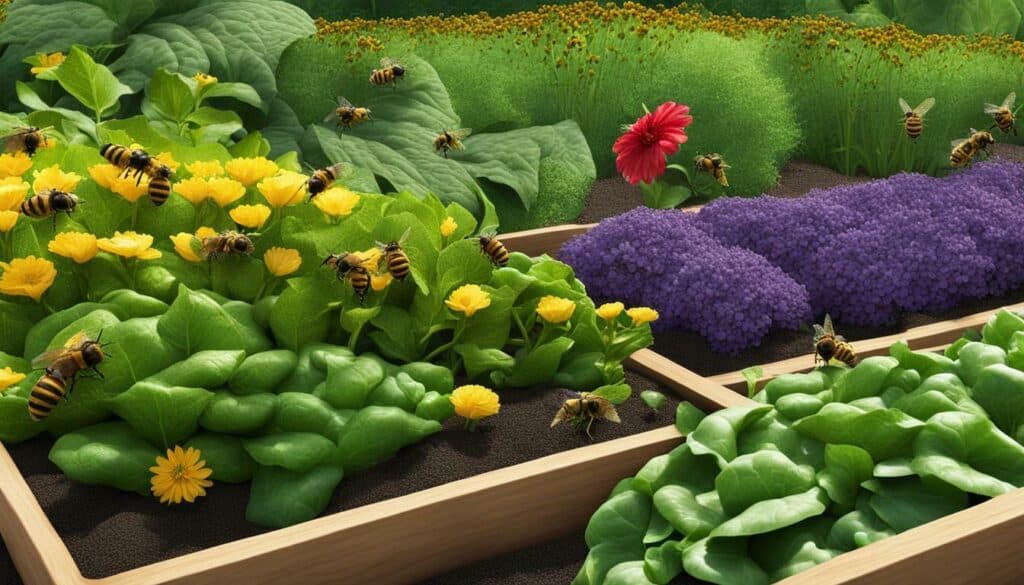
Prune and Shape: Promoting Healthy Growth
Pruning, like a skilled hairstylist, helps shape and promote healthy growth in your plants. By removing dead or diseased branches, shaping shrubs, and training climbing plants, you’ll ensure that your garden remains in top form.
Regular pruning helps keep plants healthy and improves air circulation, reducing the risk of diseases. It stimulates new growth and helps maintain the desired shape of the plants. But do you know the proper techniques to get the most out of your pruning efforts?
When pruning, it’s crucial to use the right tools. A good pair of sharp pruning shears is a must for trimming small branches. For larger branches, use a pruning saw. Make clean cuts at a slight angle, and avoid leaving stubs that can invite pests and disease.
Remember to remove any dead or diseased branches to prevent further spread of the problem. For shrubs, consider their natural shape and growth habits when pruning. You don’t want to cut away too much and create an unnatural appearance. Keep in mind that a gradual approach is better than removing too much at once.
Climbing plants require training to support structures and promote upward growth. Tie them to stakes or trellises, and prune away any side shoots that may appear.
Overall, proper pruning is key to maintaining a healthy, beautiful garden. Follow these tips to ensure your plants thrive and create a stunning outdoor space.
Weed Warriors: Keeping Your Garden Weed-Free
Weeds, the unwelcome guests in your garden, can wreak havoc on the health and growth of your plants. To keep your garden in pristine condition, it’s important to become a weed warrior, diligently removing these interlopers and implementing preventive measures.
Here are some tips and tricks to help you become a weed warrior and keep your garden free from unwanted intruders:
- Stay vigilant: Regularly inspect your garden for any signs of weeds and address them promptly. Weeds can quickly spread and compete with your plants for nutrients and water.
- Mulching: Applying a layer of organic mulch around your plants can help suppress weeds and also retain moisture in the soil. This will give your plants a competitive edge and make it more difficult for weeds to take hold.
- Pre-emergent herbicides: Using pre-emergent herbicides can be an effective way to prevent weeds from germinating. These chemicals create a barrier in the soil that inhibits weed growth. However, it’s essential to follow the instructions carefully and use them sparingly.
- Proper spacing: Plant your garden beds in a way that allows each plant enough space to grow and thrive. Crowded plants create shaded areas where weeds can easily take hold. By giving your plants room to grow, you’ll minimize competition with weeds.
- Hand-pulling: For smaller areas or less aggressive weed species, hand-pulling can be an effective method. Make sure to pull weeds from the root to prevent regrowth. It’s advisable to do this when the soil is moist, as it will be easier to remove the entire weed.
- Mulch depth: When applying mulch, ensure that it is at least two inches deep. This will provide sufficient coverage to suppress weed growth and prevent them from reaching the surface.
- Regular maintenance: Dedicate time each week to weed control as part of your garden maintenance routine. By staying proactive, you can quickly remove weeds before they have a chance to establish themselves.
Remember to be patient and persistent in your fight against weeds. With consistent effort, you can achieve a weed-free garden that will flourish with the plants you want to grow. Happy gardening!
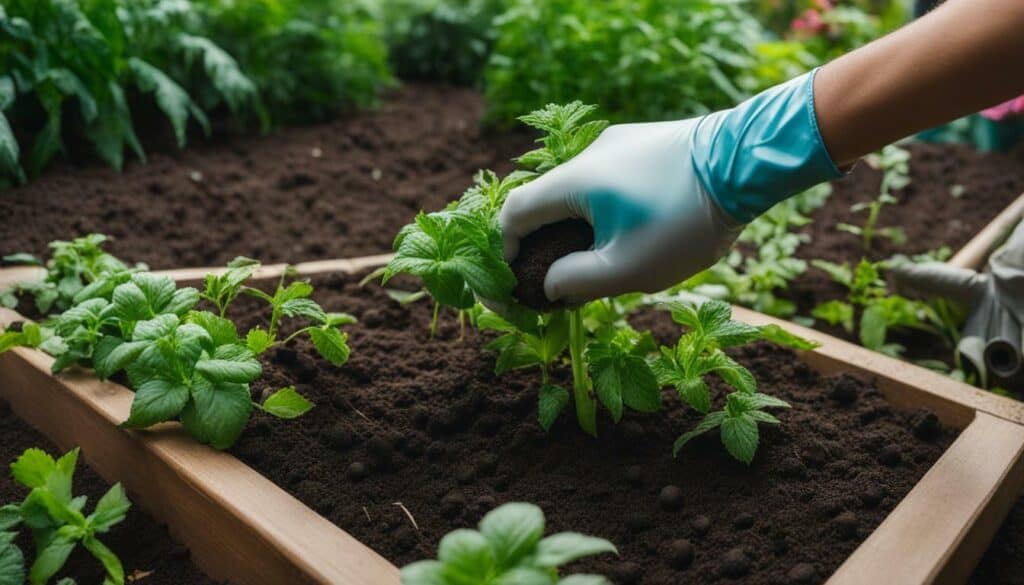
Celebrating Your Gardening Journey
Congratulations! You’ve reached the end of your ultimate guide for gardening. By exploring these expert tips and embracing the journey, you’re well on your way to achieving green thumb success and transforming your garden into a breathtaking paradise.
Whether you’re a seasoned gardener or just starting out, gardening is an exciting and fulfilling endeavor that can bring joy and beauty to your life. As you continue to cultivate your garden, here are some additional tips to help you celebrate your gardening journey:
Continuous Learning
Gardening is a continuous learning process, and as you tend to your plants, you’ll discover new insights and techniques to enhance your gardening skills. Stay curious, observe how plants respond to different conditions, and experiment with new varieties. Don’t be afraid to ask questions and seek advice from fellow plant enthusiasts.
Sustainable Practices
Embrace sustainable practices by collecting rainwater, using organic fertilizers, and creating habitats for beneficial insects and pollinators. Gardening helps us connect with nature, and by being mindful of our impact on the environment, we can make a positive contribution to the world around us.
Sharing Your Journey
Gardening can be a solitary activity, but it doesn’t have to be. Share your gardening journey with others and inspire them to embark on their own green adventures. Join online gardening forums, participate in local gardening groups, or start your own garden-themed social media account. You never know who you might connect with and what you might learn.
Get Creative
Don’t limit yourself to traditional gardening methods. Explore vertical gardening, repurpose unconventional items as plant containers, and let your creativity shine. Your garden is an extension of your personality, so have fun with it and let it reflect your unique style.
Seasonal Adaptations
Embrace the changing seasons and adapt your garden accordingly. Plan your garden’s layout to showcase seasonal blooms and colors. As the weather cools, consider planting fall and winter crops that thrive in cooler climates. The possibilities are endless.
Your Sanctuary
Lastly, remember that your garden is not just a place to grow plants but also a sanctuary for relaxation and rejuvenation. Create spaces for yourself to unwind and reflect amidst the beauty of your garden. Your garden can provide a calming and peaceful escape from the stresses of everyday life.
Every success in your gardening journey should be celebrated. Take pride in your progress and enjoy the fruits of your labor. Happy gardening!
What Are the Essential Planting Tools and Supplies for Successful Gardening?
Having the right planting essentials for green thumb is crucial for successful gardening. These tools include gardening gloves, trowels, pruners, watering cans, and a durable wheelbarrow. Essential supplies like quality soil, compost, fertilizers, and seeds or seedlings are also necessary. With these tools and supplies, gardeners can create fertile ground, nurture healthy plants, and cultivate a thriving garden.
What Are Some Quick Tips for Green Thumb Success in Plant Gardening?
Looking to achieve green thumb success in plant gardening? Here are a few quick tips for plant gardening that might help. Firstly, choose the right plants for your specific climate and location. Secondly, ensure your plants receive adequate sunlight, water, and nutrients. Additionally, regular weeding and proper pruning can promote healthy growth. Lastly, be patient and observant to address any potential issues promptly. Remember, these quick tips for plant gardening can lead to flourishing greenery in your garden.
FAQ
Q: How do I start planning my dream garden?
A: Before starting your garden, envision your dream garden and consider the space, climate, and your preferences.
Q: How do I determine my plant hardiness zone?
A: Understand your plant hardiness zone by using the USDA Plant Hardiness Zone map or consulting your local garden center.
Q: What should I do to enrich my soil?
A: Invest in high-quality compost or organic matter to enrich your soil’s nutrients. Test the pH level and adjust if needed.
Q: How should I group plants based on their sunlight requirements?
A: Group plants according to their sunlight needs to maximize growth potential. Some plants require full sun, while others thrive in shade.
Q: How often should I water my plants?
A: Consistent watering is essential, but find the right balance. Overwatering can cause root rot, while underwatering can stunt growth. Water deeply but infrequently.
Q: How does mulching benefit my garden?
A: Mulching helps retain moisture, suppress weeds, and regulate soil temperature. Use organic mulch for the best results.
Q: How often should I fertilize my garden?
A: Fertilize your garden regularly with organic or slow-release fertilizers to provide essential nutrients. Avoid over-fertilizing.
Q: How can I promote healthy growth in my plants?
A: Regular pruning promotes healthy growth. Remove dead or diseased branches, shape shrubs, and train climbing plants.
Q: How do I prevent weeds in my garden?
A: Remove weeds regularly to prevent competition for nutrients and water. Mulching and pre-emergent herbicides can also help.
Q: How can I control pests in my garden?
A: Identify common pests in your area and take preventive measures. Introduce beneficial insects or use organic pest control methods.
Q: What is companion planting and how does it benefit my garden?
A: Companion planting involves pairing plants that naturally complement each other, repelling pests or enhancing nutrient absorption. Research compatible plant combinations.
Q: When should I harvest my plants?
A: Harvest vegetables, herbs, and flowers at their peak for the best flavor. Get creative in the kitchen or share your harvest with others.
Q: How can I connect with the gardening community?
A: Connect with the gardening community by joining online forums or local gardening groups. Learn and be inspired by others’ experiences.
Q: Are there unconventional gardening methods I can try?
A: Explore unconventional gardening methods like vertical gardening or repurposing items as plant containers for added creativity.
Q: How can I keep my garden alive throughout the year?
A: Research plants that thrive in each season and plan your garden’s layout accordingly. Keep your garden alive and vibrant all year long.
Q: How can I create a relaxing atmosphere in my garden?
A: Create a relaxing atmosphere in your garden with cozy seating areas, water features, and fragrant plants.
Q: How can I involve children in gardening?
A: Involve children in gardening and teach them about plant life cycles. Instill a love for nature in them.
Q: How can I celebrate my gardening journey?
A: Celebrate milestones in your gardening journey and share your accomplishments with others. Inspire others to explore gardening.
Source Links
- https://www.greenthumbsgarden.com/pages/planting-instructions
- https://vocal.media/lifehack/sprout-success-the-ultimate-guide-to-growing-spectacular-plants-in-your-garden
- https://www.amazon.com/Raised-Bed-Gardening-Beginners-Successfully-ebook/dp/B093298WCG
- https://portfarms.com/finding-your-green-thumb/
- https://chascrazycreations.com/creating-your-dream-garden-easier-than-you-think/
- https://www.floralandhardy.co.uk/services/garden-plans/
- https://paradisepondsandfalls.com/blog/essential-steps-for-planning-your-dream-garden-pond
- https://www.bhg.com/gardening/gardening-by-region/how-to-use-hardiness-zone-information/
- https://www.cnet.com/home/yard-and-outdoors/understanding-your-usda-hardiness-zone-and-why-itll-keep-your-plants-alive/
- https://www.almanac.com/what-are-plant-hardiness-zones
- https://rootwisegardens.com/blogs/gardening-guides/soil-101-the-secret-ingredient-to-easier-gardening
- https://www.gardenista.com/posts/dirty-secrets-10-ways-to-improve-garden-soil/
- https://www.amazon.com/Secrets-Soil-Composting-Fertilizing-Super-Nutritious/dp/B0BMZ9WDQX
- https://southernlivingplants.com/planting-care/a-gardeners-guide-to-sun-exposure/
- https://savvygardening.com/vegetable-garden-planner/
- https://savvygardening.com/4×8-raised-bed-vegetable-garden-layout/
- https://extension.umn.edu/how/watering-vegetable-garden
- https://www.gardeners.com/how-to/water-wise-gardening/5047.html
- https://www.hgtv.com/outdoors/gardens/planting-and-maintenance/the-proper-way-to-water-your-garden
- https://wolfhillgardencenter.com/blogs/blog/the-power-of-mulch-enhancing-your-garden-and-reducing-maintenance-with-organic-materials
- https://www.heirloomsoul.com/blog/how-to-suppress-weeds-organically-without-chemicals
- https://www.dandys.com/blogs/news/embrace-sustainable-gardening-with-no-dig-gardening-methods
- https://www.ocregister.com/2020/06/05/feeding-frenzy-which-garden-plants-need-nutrients-now-and-which-dont/
- https://goveganic.net/resources/books-and-magazines/teaming-with-microbes-a-gardeners-guide-to-the-soil-food-web/
- https://www.live-native.com/zucchini-garden-success-secrets-to-thriving-plants-and-abundant-produce/
- https://getbusygardening.com/pruning-plants/
- https://www.finegardening.com/project-guides/pruning/maintenance-pruning
- https://extension.umn.edu/planting-and-growing-guides/pruning-trees-and-shrubs
- https://savvygardening.com/weed-free-garden/
- https://www.barnesandnoble.com/w/weed-free-gardening-tasha-greer/1139660754
- https://www.homeideas.com/how-to-weed-a-garden/
- https://www.pbs.org/education/blog/celebrating-earth-day-with-a-gardening-focus
- https://simplysmartgardening.com/gardening-101-beginning-gardener/
- https://www.montydon.com/books-current

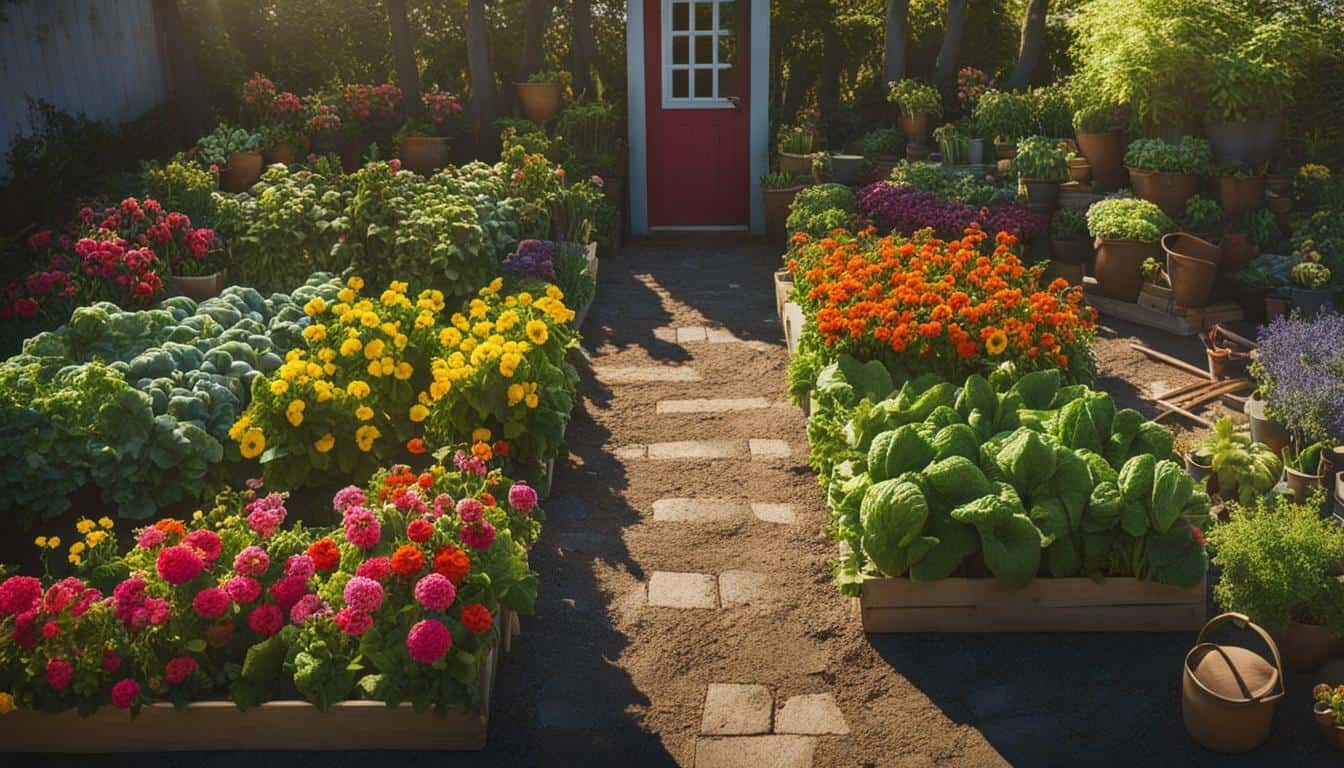



Leave a Reply